The idea with those Pavilnys articles is to tell the story of this suburb of Vilnius, Lithuania through several lenses, and this is why I have called this series Pavilnys Trilogy. The first part, which some of you have already read is called “Places of Pavilnys.” In it I describe the places, which for objective or not so objective reasons are special to me.
In this part, called “People of Pavilnys” I will let other people speak. I am planning to publish several articles, so you can meet several Pavilnys locals, get to know them and see this place with their eyes. This article is the first of this second part.
Finally, in the third part, called “Homes of Pavilnys” I will visit several people’s home and see, what it is which makes their house their home. Because after all, Pavilnys it is not a tourist destination. It is first of all a place I always come back to. My home.
And as you know from the previous post, I am not doing this series alone, but with photographer Ramunas Petkevicius – not just an artist, but a local Pavilnys artist as well. Lucky me!
So, after this introduction, let me present you our first local. His name is Fikrat Salimov, he is a 5 in 1 artist (you have to read more to know what it means exactly!) and a loyal Pavilnys resident. Now, I give the floor to Fikrat.
On Pavilnys
When I came to Pavilnys for the first time, I was surprised to realise that such a different atmosphere can exist so close to the city. I got very interested in learning about the kind of life people live here. I noticed that they try to give their work as little attention as possible. They plant big gardens, build greenhouses. They just adore it, they dream about retirement, so they can spend the whole day in their garden. You know, my neighbour built himself a mill, just so he could watch it.
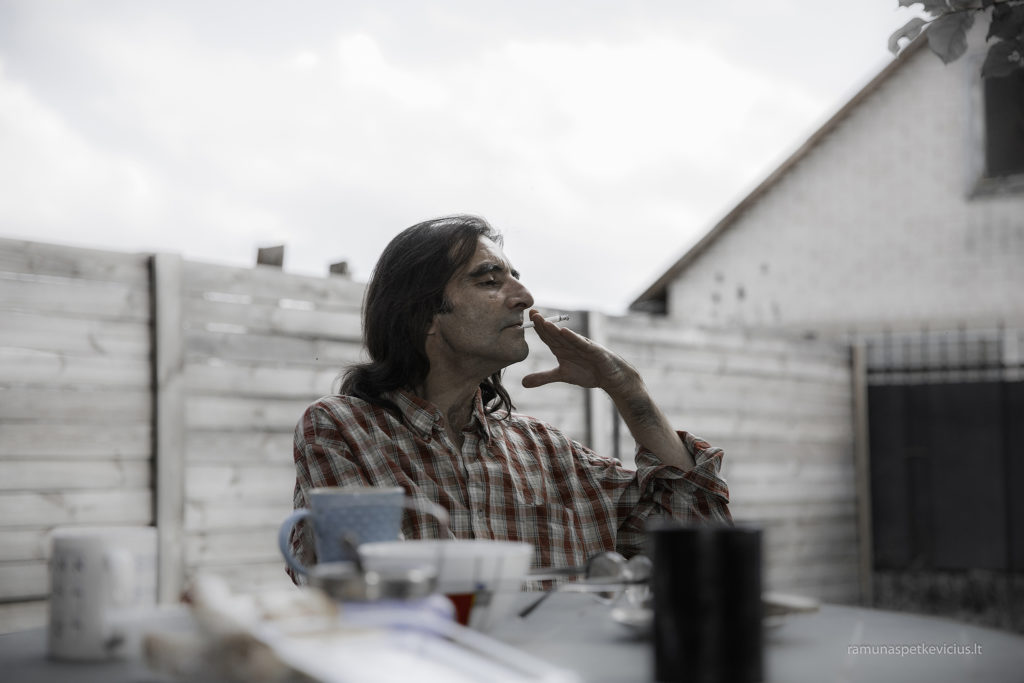
The first time I found myself in Pavilnys was 18 years ago. I started teaching art in the local club during one summer.
Fikrat’s wife Liuba: Fikrat introduced me to this club, and we started working there, teaching kids. Later I even became the director of this club. Of course, without any salary, just for the honour of it. We also printed a local Pavilnys newspaper, but this was 15 years ago. It used to be in three languages: Russian, Polish or Lithuanian. Locals would write something in the language they wanted, and we would put it there without any translation, the way it was.

Fikrat: Nowadays all parents drive their children to the city, here there is not much to do.
I really liked it here, so I bought a little flat in Lower Pavilnys. We lived there for a couple of years and then left for the countryside. But after spending 10 years in the country we wanted to come back to the city, and so we started looking for a place to live here. We wanted to have a small flat, a studio for painting and a garden. This is what we found in Upper Pavilnys.

Lower and Upper Pavilnys are extremely different both in the level of education, income and the way of life in general.
Lower Pavilnys is mostly railway workers, proletarians. They used to build their houses around the railway, so they can just leave the house, take two steps, and arrive to the workplace. Now there are also some outcasts who are drinking themselves into their grave.
Upper Pavilnys, if I understood it correctly, is more of a recreational area. People would live in the city and come here for the summer.
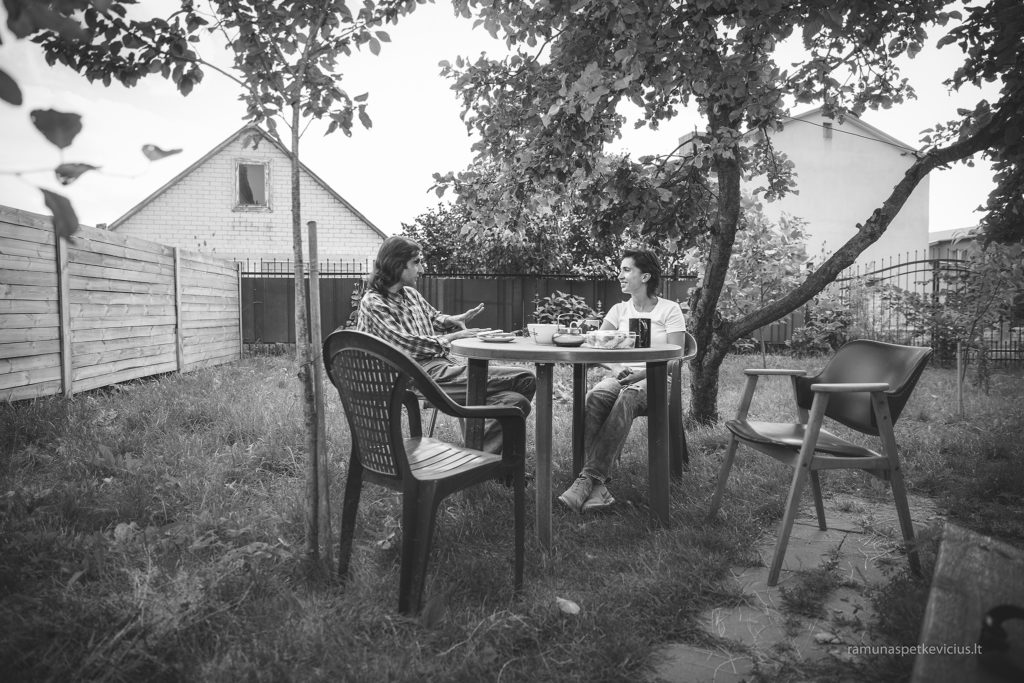
You cannot see Pavilnys as a part of Vilnius, like Antakalnis or some other suburbs, it is a whole different world. There are two different cities of Vilnius: the one we, the old hippies, used to love and the one we used to dislike. We didn’t like Gediminas Avenue and all the official buildings, the Parliament, etc. And we loved the old town. The essence of Vilnius for me is the opposition of two forces: the old town and the official centre.
You’ve probably noticed that each town would have their own Uzupis district? People were always building their cities this way, so one of the districts is placed behind the river and somehow becomes more rural and creative.
But each city also has its own Pavilnys. A district of relaxation and rest, but still a part of the city. A place with a distinct architecture and even nature. Many locals brought some exotic plants from different parts of the USSR here and planted them. And you know how it goes with the plants: the birds would eat the seeds, fly away, poo around and op! – the same type of plant is suddenly growing not only in one garden, but around the area.
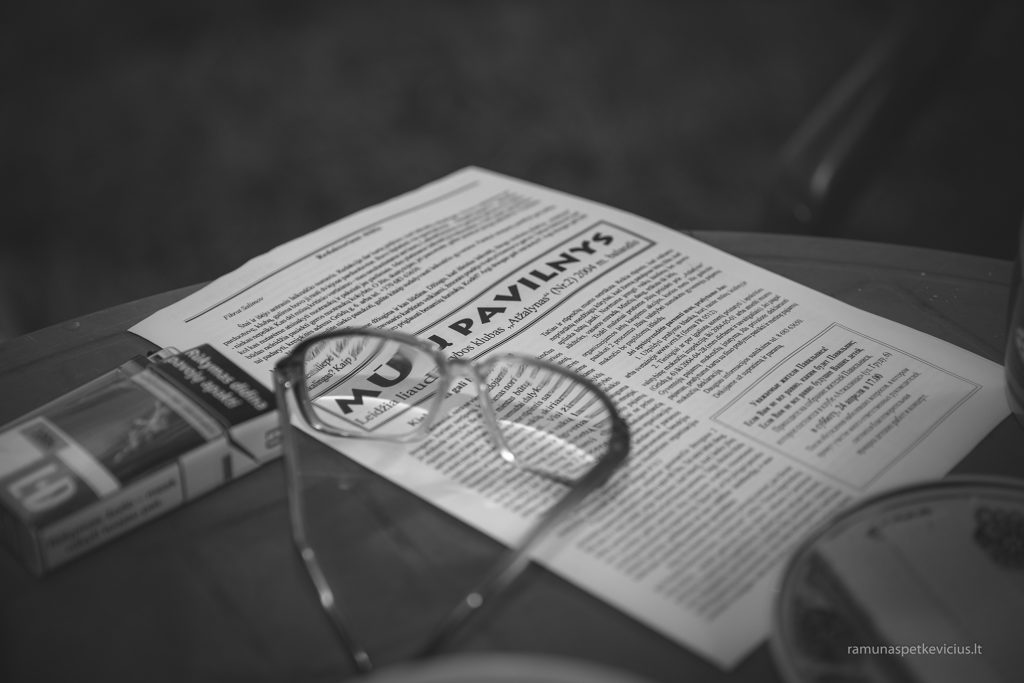
On local communities
Nowadays people can be friends in groups, but not build local communities. Those communities hardly exist in Uzupis, or here. And I doubt whether such thing as an ideal community can still be found anywhere. People don’t have time for this. For a person to start investing his time in some community, he has to be able to come home and not need to leave to his second job. He needs to rest in order to actually wish to meet someone, to communicate. If a person is constantly tired, he doesn’t want to interact and meet people.

But this is not to say that we don’t need to have Community houses, libraries, art events locally. We need them a lot. I heard the local library will be closed, because the people are not coming there. But it needs to exist just so it is there. No matter how many visitors it gets on a daily basis. Without it there will be no cultural life. This culture will manifest itself someday somehow. Maybe there will be 10 writers coming the the library to sit together and read their poems to each other. None of those writers will ever write any masterpiece. But they gather there because one day a little boy will come in this library by accident and hear something. And this something will give him a push. So the whole meaning of life of those writers and the library is this little boy.
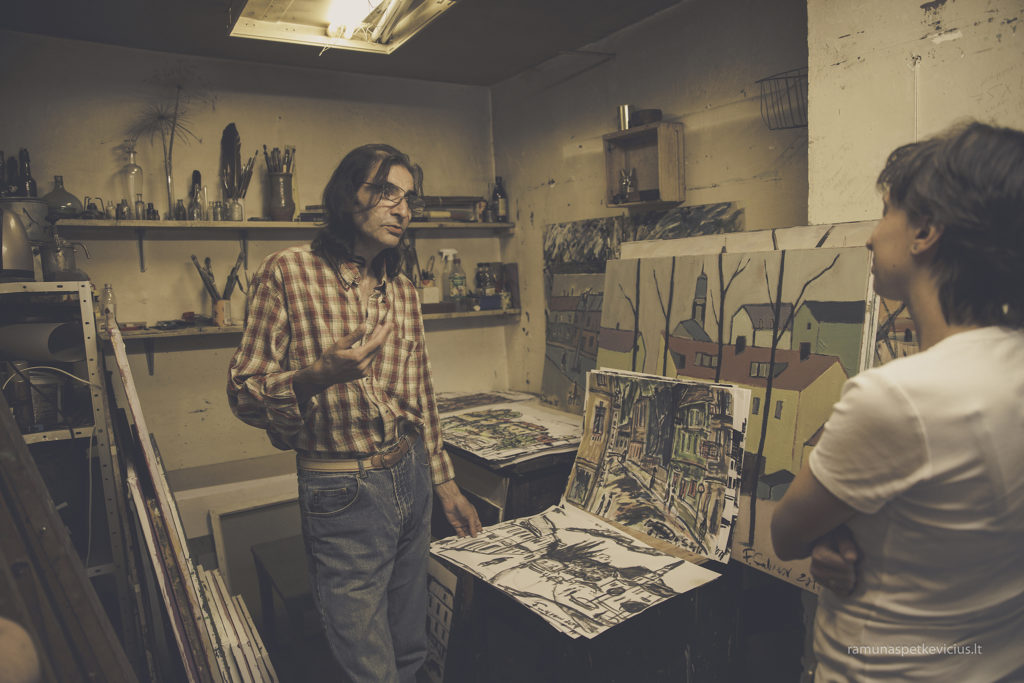
On art
I am a painter, graphic artist, journalist, poet and photographer. Five in one! But in reality I usually immerse myself into one of those things, and then into another. If you deal with everything at the same time, nothing good comes out. Now I got really interested in street photography. Then I get tired of all that and come back to my painting studio.
But one common thread which goes through all those activities is my topic. At the moment it is the city and its people. I take photos of the city, paint the city, write about the city. I have published two books of poems about the city and recently had a photo exhibition called “Looking for the city” together with a friend of mine.
What will come out of all this? I think about the city, I study it. I know more about the city than most people, and still I know very little. I would like to learn more.
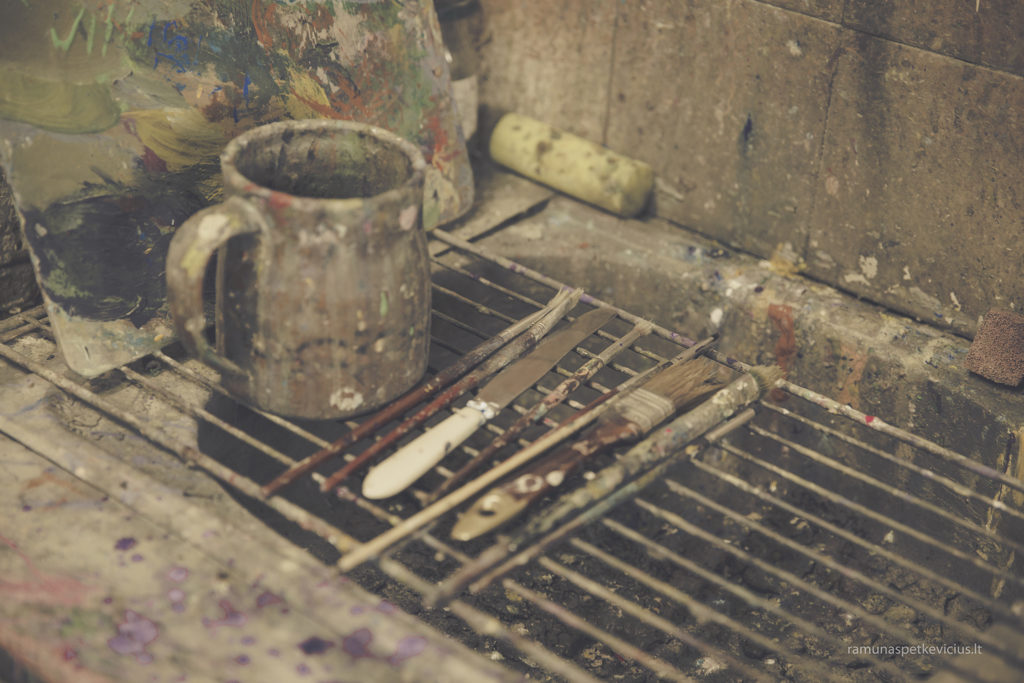
Strangely enough, I rarely paint Pavilnys. For me it is a place of calm. I spend my time in the garden, take a walk, but I come no further than the river.
When we lived in the country, I did not have a room to paint in. And during this time I wrote a lot. To write you don’t need much: just your pen and some paper. During that time I understood that those periods of creativity depend also on the circumstances. But you can’t just sit and do nothing.
In this studio I have a stove, so I can also work here during the winter. Before us, the owners used to live here.
My paintings depend on my moods, and it is based on the mood I would choose my technique and the colours. Usually I make a sketch and a photograph of the place, and then work on a painting at home. Those photos are really helpful. I would zoom them in later and see some details and objects, which I hadn’t notice before.
The place would also influence the painting. This one had the movement and I reflected this movement. This one was static. And the most interesting part is that you do it unconsciously when you paint. And even more so when you write.
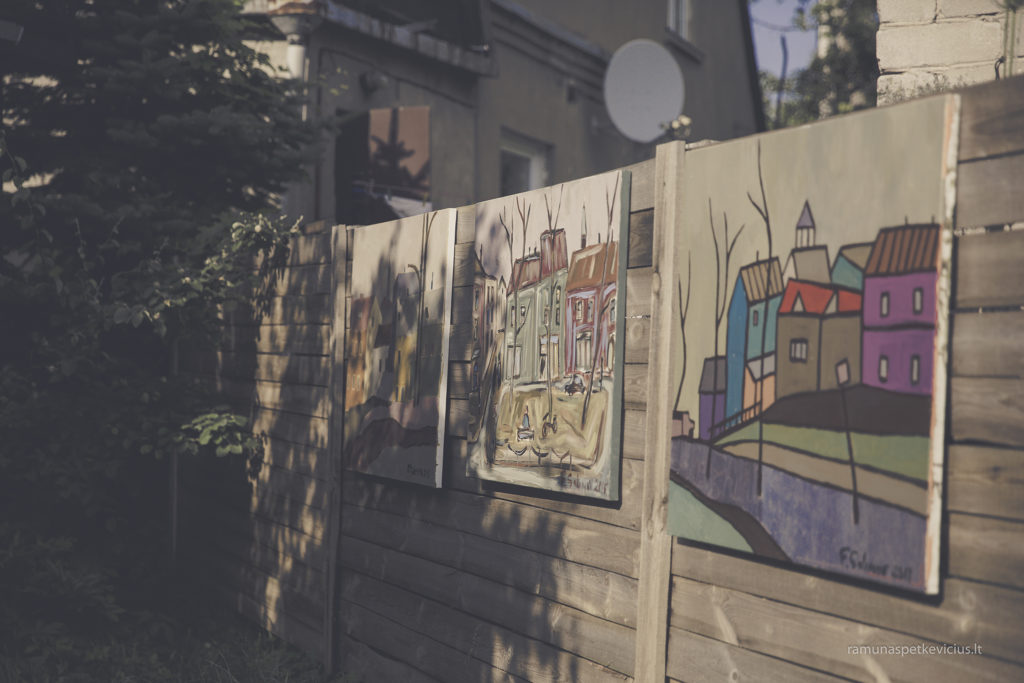
There is such a state as an entrance state. You see things, but not the way you usually do. You see everything. To achieve this state, you need several elements: the surroundings, the lights and your inner mood. If you manage to balance all those three, you get a kind of super-sex, the most pure artistic pleasure of all. You should not be scared to catch this mood. When you paint like this, the works become lighter and more poetic.
Now everyone is a writer, a photographer, a painter. This is good. Before I was skeptical about this. I believed that this quantity would somehow devalue the art. But I realised that if you have vision, you cannot spoil it. The people will find out what is good and what is bad.

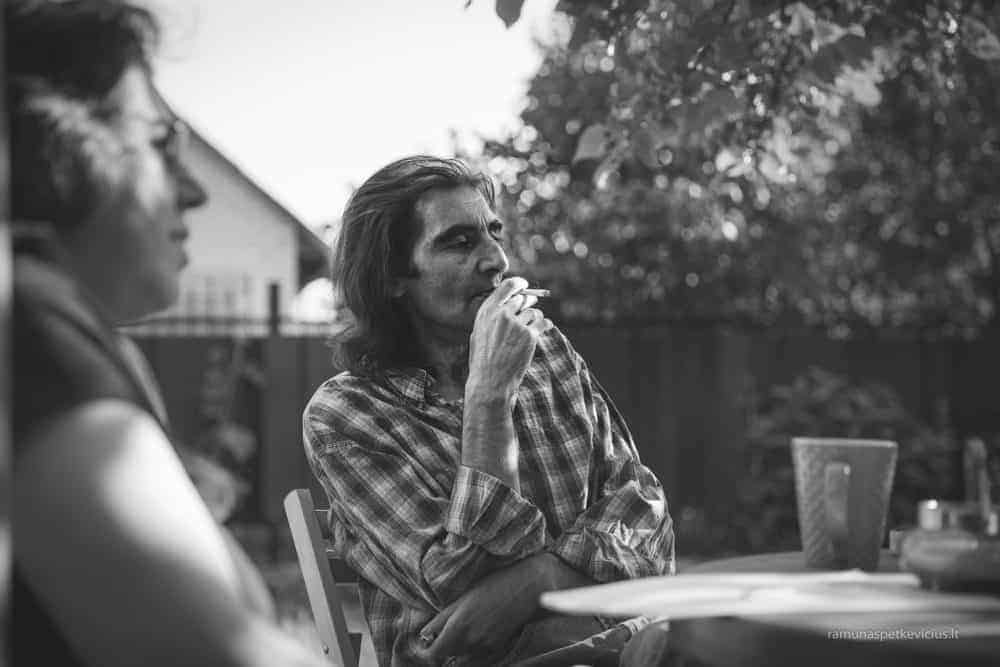


Omg! Just came across this!! So amazing! Love Pavilnys. I have the same opinion about books 😀